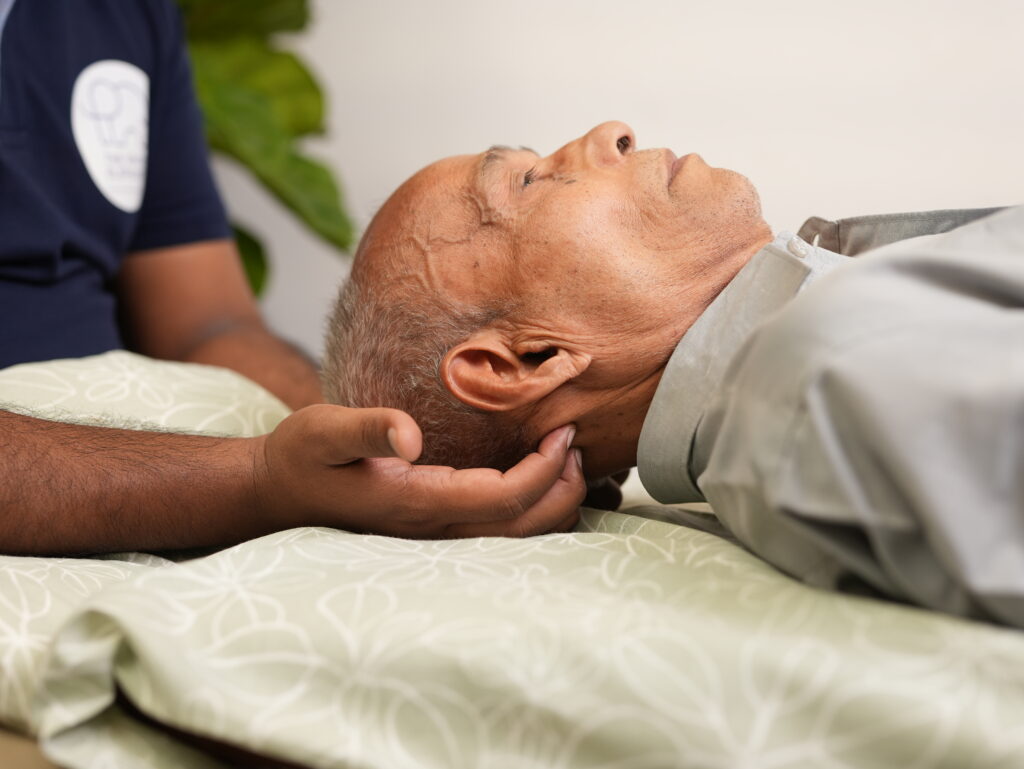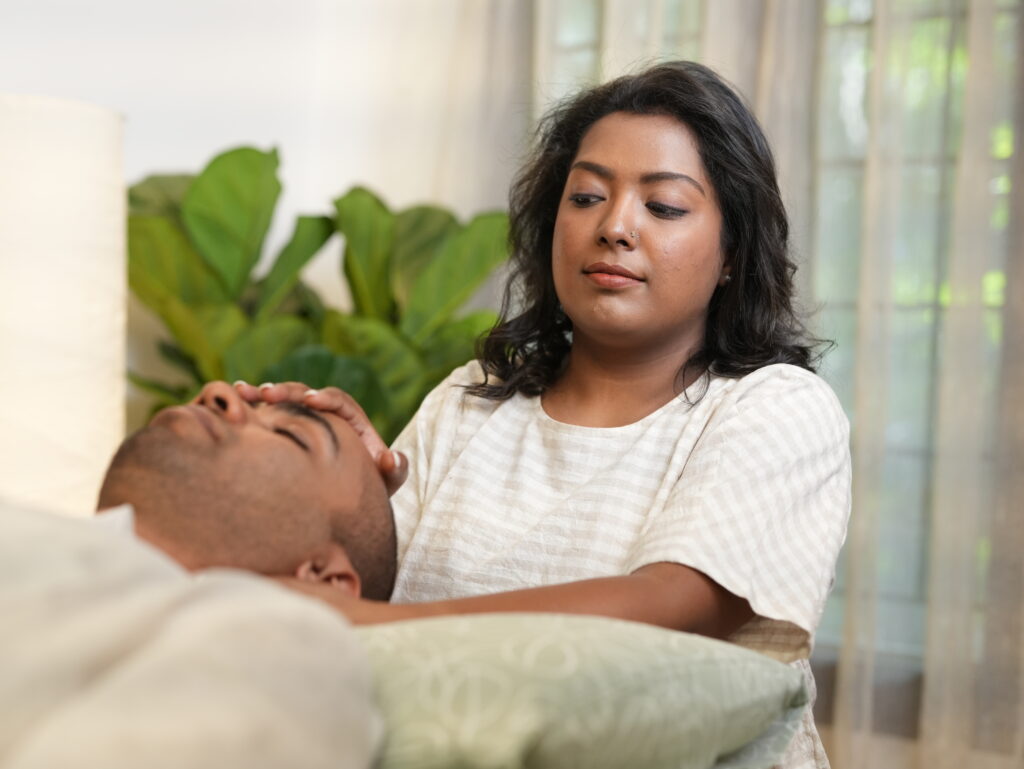Introduction
Welcome to our blog article on adhesive capsulitis, commonly referred to as frozen shoulder or periarthritis of the shoulder. The condition appears to be caused by thickening and inflammation of the capsule around the shoulder joint, resulting in pain and restricted range of motion. We’ll explain how osteopathy provides an alternative to typical medical therapies, which concentrate on pain management and physical therapy. Osteopathy addresses the underlying causes of periarthritis and employs a variety of osteopathic treatments that promote recovery.
We will explore the including mobilisation, releasing tension in the neck and cervical structure, fascia work, osteopathic visceral manipulation.
Importance of Shoulder Mobilisation
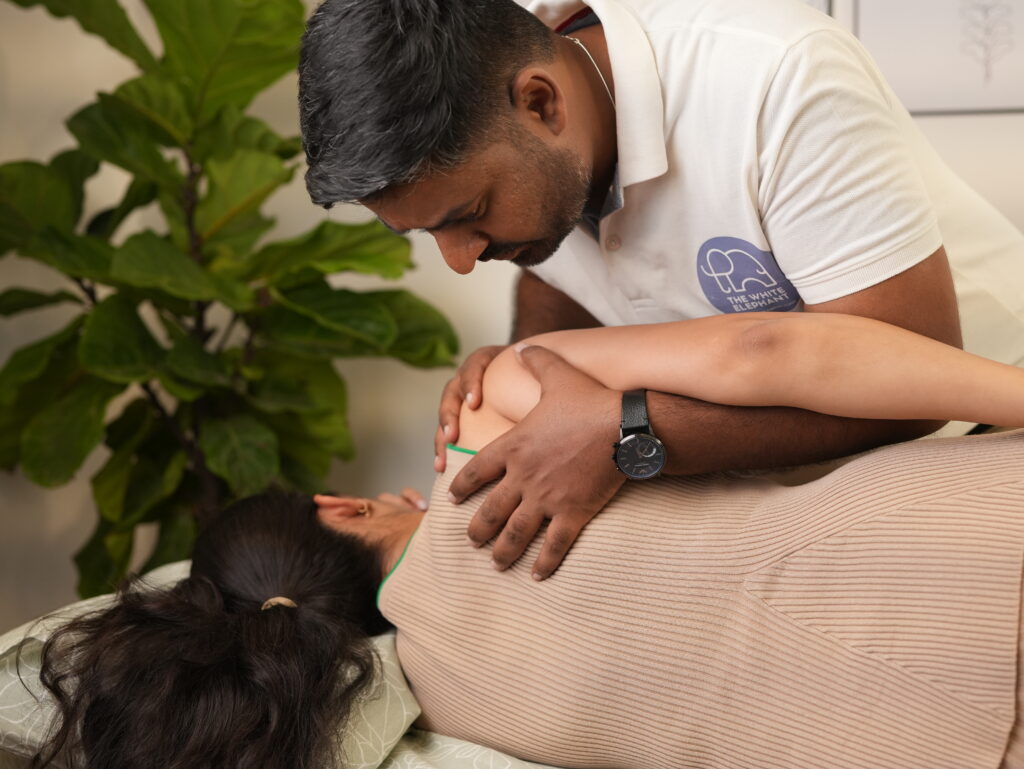
One of the primary osteopathic techniques for regaining joint mobility and reducing inflammation is mobilisation. For the purpose to assist release adhesions and improve range of motion, osteopathic practitioners accurately apply pressure and motions to the shoulder joint using moderate manual techniques. These methods might use muscular energy strategies, passive stretching, and oscillatory motions.
Role of releasing Neck and Cervical Structure
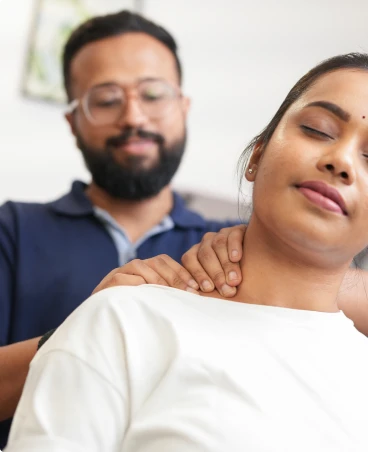
Osteopaths address shoulder problems holistically, recognizing that the musculoskeletal system is interconnected. They are aware that dysfunction in the cervical spine and neck could lead to shoulder problems. Osteopathic practitioners help patients heal from injuries to the shoulders by reducing tension in those areas. They improve spinal alignment and reduce nerve irritation, which can lead to referred pain in the shoulder, by using soft tissue methods and mild modifications. Improved musculoskeletal function overall and successful recovery are the primary objectives of this comprehensive method.
Fascia Work importance in Frozen Shoulder
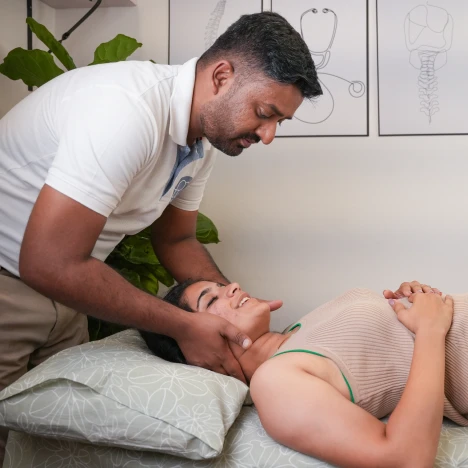
The connective tissue referred to as fascia, that surrounds and connects bodily components including muscles and joints, is essential. Shoulder pain and dysfunction in the surrounding areas might be caused by tightness or constriction in the fascia. By releasing fascial tension, restoring tissue mobility, and reducing pain, osteopathic techniques—myofascial release in particular—address these problems. For example, there is a clear link between flat feet in growing newborns and tongue or lip knots. That’s due to fascial connections.
Osteopathic Visceral Manipulation
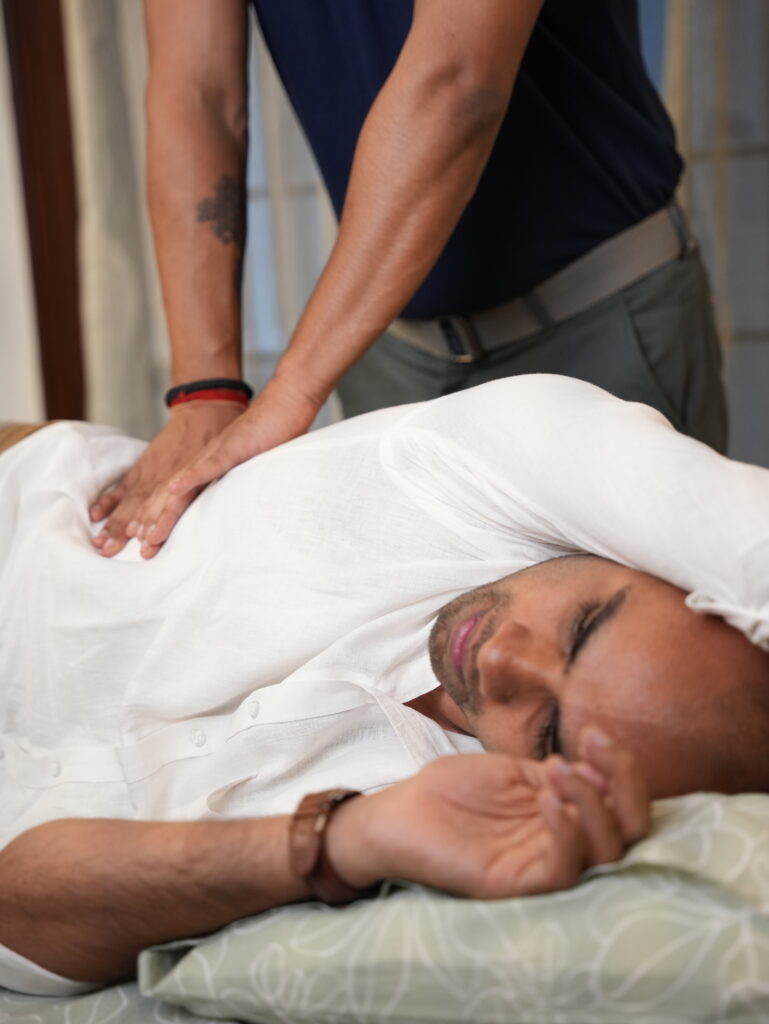
Visceral manipulation, an osteopathic technique, targets internal organ restrictions and dysfunctions that could influence shoulder problems. The theory posits interconnected bodily systems, where imbalances in one area impact others. Through gentle organ and surrounding structure manipulation, osteopaths strive to restore function and relieve referred shoulder pain caused by liver and stomach or any other visceral organs.
Conclusion
In conclusion, osteopathy presents a comprehensive and holistic approach to managing periarthritis of the shoulder. By addressing the root causes of the condition through a variety of osteopathic techniques aim to alleviate pain, improve range of motion, and enhance overall well-being.
References
- Chaitow, L. (2019). The Concise Book of Muscles. North Atlantic Books.
- DiGiovanna, E. L., Schiowitz, S., & Dowling, D. J. (2005). An Osteopathic Approach to Diagnosis and Treatment. Lippincott Williams & Wilkins.
- Myers, T. W. (2018). Anatomy Trains: Myofascial Meridians for Manual and Movement Therapists. Churchill Livingston
- Barral, J. P., & Croibier, A. (2017). Visceral Manipulation II. Eastland Press.
- Upledger, J. E., & Vredevoogd, J. D. (1983). Craniosacral Therapy. Eastland Press.
